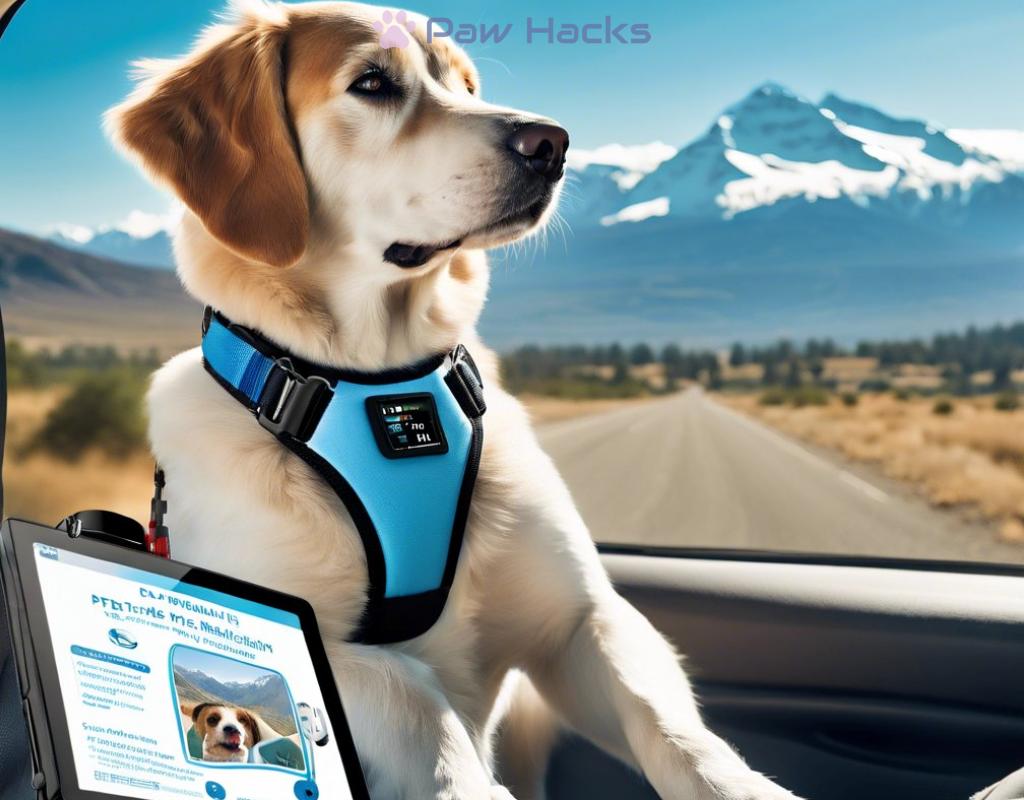Traveling with Diabetic Pets
Essential Preparations for Traveling with Your Diabetic Pet

Traveling with a diabetic pet requires careful planning and understanding of their specific health needs. Diabetes in pets can be managed effectively, but it does require strict adherence to their dietary and medication schedules. Before embarking on your journey, consult with your veterinarian to ensure your pet is stable enough for travel and to discuss any necessary adjustments to their diabetes management plan.
Having the right supplies on hand is crucial when traveling with a diabetic pet. Below is a list of essential items you should pack:
- Insulin and Syringes: Always bring more than you think you’ll need.
- Glucose Monitoring Kit: Check your pet’s blood sugar levels regularly.
- Special Diet Food: Bring enough of your pet’s prescribed food for the entire trip.
- Emergency Snacks: Keep a stash of high-sugar snacks in case of hypoglycemia.
- Water and Bowls: Stay hydrated throughout the journey.
- Medical Records: Carry copies of your pet’s health records and medication instructions.
The mode of transportation you choose can significantly impact your diabetic pet’s comfort and health. If traveling by car, ensure your pet has a secure space with proper ventilation. If flying, check with the airline for their policies regarding pets and medications. Always consider your pet’s temperament and needs when selecting travel methods to minimize stress.
Navigating Airports and Transportation with Diabetic Pets
Traveling through airports can be a daunting task, especially when you have a diabetic pet in tow. It’s essential to plan ahead and understand the various aspects of navigating airport protocols while ensuring your pet’s health and comfort remain a top priority. From security checks to boarding, being prepared can make the journey smoother and less stressful for both you and your furry companion.
Airports have specific regulations when it comes to traveling with pets, particularly those requiring special medical attention like diabetic pets. Before arriving at the airport, research the specific airline’s pet travel policy regarding medications and the transportation of diabetic supplies. This may include carrying your pet’s insulin and syringes in your carry-on bag, as some airlines do not allow these items in checked luggage. Additionally, ensure you have all necessary documentation, such as veterinary health certificates and proof of your pet’s diabetes management plan, readily available.
When it comes to security screening, expect to go through additional measures with your diabetic pet. At the security checkpoint, you may be asked to remove your pet from its carrier for a brief inspection. Keep your pet calm by speaking to them soothingly and providing them with their favorite toy or blanket for comfort. It’s crucial to mention to the TSA agents that your pet is diabetic, as they may be more accommodating in terms of the procedures followed. Being proactive about your pet’s needs will ensure a smoother experience during this potentially stressful time.
Once you’ve successfully navigated through the airport, the next challenge is ensuring your diabetic pet is comfortable during transit. If you’re traveling by plane, consider choosing a direct flight to reduce the duration of travel and the risk of delays. Make sure to adjust your pet’s feeding and insulin schedule according to the flight times. If possible, take time to walk your pet before boarding to allow them to relieve themselves and stretch their legs. Additionally, keep a close watch on their behavior and blood sugar levels during the journey. If you notice any signs of distress or hypoglycemia, be prepared to take action by administering emergency snacks or adjusting their insulin dosage if necessary.
Finding Pet-Friendly Accommodations That Cater to Health Needs
When embarking on a journey with your diabetic furry friend, one of the most critical factors to consider is where you will stay. Not all pet-friendly accommodations offer the same level of care and attention to pets with special health needs. Therefore, it is essential to take the time to research and find a place that not only welcomes your pet but also understands their unique requirements.
Prioritize accommodations that openly advertise their experience with pets that have medical conditions. Look for hotels or lodgings that explicitly mention they are familiar with diabetic pets, as this can significantly ease your concerns. Reading reviews from other pet owners can provide insight into how accommodating the staff has been regarding health-related matters. Opt for places that have a reputation for being attentive to the special needs of all pets, ensuring your diabetic pet will receive the care they deserve.
When selecting a suitable accommodation, consider the amenities that may support your pet’s health. Look for hotels that offer kitchen facilities or pet-friendly dining options, which can be a lifesaver if your pet requires a specific diet. Having access to a refrigerator can keep your pet’s insulin at the right temperature, making it easier for you to manage their medication effectively.
Additionally, choose accommodations that provide easy access to outdoor spaces where your pet can exercise and relieve themselves. This is particularly important for diabetic pets, as maintaining their routine is crucial for managing their condition. A nearby park or walking trails can be a huge benefit, providing both exercise and the chance for your pet to enjoy the fresh air.
Once you have narrowed down your choices, don’t hesitate to reach out directly to the accommodations. Before making a reservation, inquire about their experience with diabetic pets and how they can assist you during your stay. This proactive approach not only helps you gauge their level of understanding but also allows you to express your pet’s specific needs, ensuring that your requirements are met.
Many establishments may be willing to provide additional assistance, such as storing your pet’s medication securely or allowing for flexible check-in and check-out times to accommodate your pet’s routine. By establishing open communication, you set the stage for a more comfortable and stress-free experience for both you and your diabetic pet.
Managing Your Diabetic Pet’s Diet on the Go
Traveling with a diabetic pet can be a rewarding experience, but it also requires careful attention to their dietary needs. It’s crucial to maintain their regular meal times and ensure they receive the correct type of food to manage their condition effectively. When on the road, having a structured feeding schedule is not just a routine; it’s a vital aspect of your pet’s health. The right approach can prevent potential complications and keep your furry friend happy and stable.
Before hitting the road, plan your pet’s meals in advance. This means packing their prescribed diet food in easily accessible containers to avoid any mix-ups. If your pet is accustomed to specific brands or types of food, ensure that you have ample supply for the entire trip. When considering meals on the go, think about how you can replicate their usual feeding routine. For instance, if your pet eats wet food, consider bringing a cooler with ice packs to keep it fresh. If you are traveling for an extended period, research local stores to identify those that carry your pet’s dietary needs, so you can restock if necessary.
While adhering to a strict diet is essential, it’s equally important to monitor your pet’s response to their meals. During your travels, keep a close eye on their energy levels and overall behavior. If you notice any signs of distress or unusual lethargy, it may indicate that adjustments need to be made. In some cases, stress from travel can affect a pet’s appetite. If your pet is not eating as usual, consult your vet to determine if any changes to their insulin dosage are necessary. This adaptability can be crucial to ensuring your pet’s health remains stable throughout your journey.
Emergency Care Tips for Diabetic Pets While Traveling
Traveling with a diabetic pet can be an exhilarating experience, but it also comes with its own set of challenges. One of the most crucial aspects of traveling is being prepared for emergencies, especially when it comes to your pet’s health. Understanding what to do in case of a medical crisis can make all the difference. It’s not just about having the right supplies; it’s about knowing how to react quickly and effectively to ensure your furry friend remains safe and healthy throughout the journey.
During your travels, it is essential to be vigilant and recognize the signs that your diabetic pet may need immediate attention. Common indicators include excessive thirst, frequent urination, lethargy, or unusual behavior. If your pet appears disoriented or seems to be having difficulty walking, these can be symptoms of hypoglycemia or hyperglycemia. Acting swiftly upon observing these symptoms can prevent a situation from worsening. It’s advisable to familiarize yourself with these signs before hitting the road, as they can help you intervene promptly when needed.
Having a well-thought-out emergency action plan can be invaluable when managing your diabetic pet’s health on the go. Before you travel, identify local veterinary clinics or emergency animal hospitals along your route. Make sure to keep their contact information handy, as well as the nearest 24-hour emergency vet services. Additionally, carry a travel health kit that includes your pet’s medications, a copy of their medical records, and essential supplies such as glucose gel and syringes. For a smooth experience, ensure that your pet’s vaccination records are up-to-date, as some veterinary clinics may require this documentation for treatment.
In case of a hypoglycemic episode, knowing how to administer emergency glucose is critical. Always carry a high-sugar snack or glucose gel with you to address low blood sugar levels. This proactive approach can be life-saving, allowing you to stabilize your pet until you can reach professional help.
In emergencies, your demeanor can significantly impact your pet. Remaining calm and focused can help soothe your diabetic companion and make it easier for you to think clearly about the next steps. Practice deep breathing or positive affirmations to maintain your composure. Your pet can sense your anxiety, and a calm environment will help reduce their stress levels, which is especially crucial in an emergency situation. By being prepared and knowing how to respond effectively, you can ensure that traveling with your diabetic pet remains a positive experience.
Share this content:



